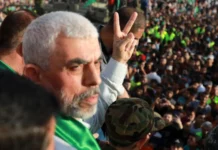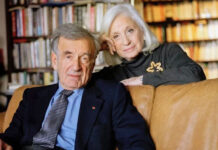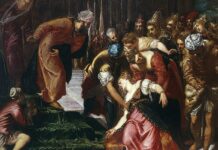On November 9, 1938, a two-day pogrom began during which the Nazis burned more than 1,400 synagogues and Jewish institutions in Germany and Austria on ‘Kristallnacht’ (The Night of Broken Glass), a critical moment in the chain of events that led to the Holocaust.
On November 9, 2020, March of the Living will mark Kristallnacht with a message of unity and hope, through a unique international campaign. Titled “Let There Be Light”, March of the Living will invite individuals, institutions and Houses of Worship across the world to keep their lights on during the night of November 9th, as a symbol of solidarity and mutual commitment in the shared battle against anti-Semitism, racism, hatred and intolerance.
As part of this historic virtual initiative, people from all over the world will be able to add their voice to the campaign. Individuals of all religions and backgrounds are invited to write personal messages of hope in their own words at the campaign website.
March of the Living President, Phyllis Greenberg Heideman & March of the Living World Chair, Dr. Shmuel Rosenman: “We must use our voices to tell the world that attacks on Jews and non-Jews alike, whether on the basis of religion, race, color or creed are inexcusable. In the days when synagogues and holy places for various religions are attacked on a regular basis all over the world, it is our duty to speak out loudly and clearly.”
Head of the Jewish Community Frankfurt am Main, Prof. Dr. Salomon Korn: “Anti-Semitism and racism threaten our society as a whole, they endanger our values and our democracy. Together we want to send a signal against the increase of anti-Semitism and hate-speech all over the world. We want to raise awareness against growing discrimination and intolerance and bring the light of humanity in these difficult times”.
John Farmer, Director of the Eagleton Institute of Politics, at the Miller Center: “Kristallnacht marked a fundamental turning point in the historical movement from culturally based anti-Semitism to state-sanctioned genocide. On November 9, 1938, the antisemitic propaganda to which the Jewish population had been subjected for years was transformed to open violence, sanctioned by the state. Commemorating that dark day in human history is particularly significant today, as the hatred that has been rising over social media has begun erupting into violence against the Jewish and other faiths. It is imperative that such darkness be refuted by light: the light that will shine on houses of worship throughout the world tonight, and the light of truth that shames all forms of hatred.”
———————————–
March of the Living is the largest annual international Holocaust education program of its kind in the world. The event is considered a major part of the annual Yom Hashoah commemorations. To date, more than 300,000 March of the Living participants, from 52 countries have walked the route of the march, the 3.2-kilometer-long railroad tracks from Auschwitz to Birkenau.
Due to the COVID-19 pandemic, for the first time since its inception, the annual March did not take place in Poland this year. Instead, as part of a virtual commemorative project, March of the Living launched an international digital initiative in which Israel’s President Reuven Rivlin was the first to lay a virtual plaque on the virtual train track of Birkenau, followed by Holocaust survivors and their families. In total, more than 18,000 people from 60 countries around the world took part in the online event.


























